Grace Kelly Blue Dress in to Catch a Thief

It's one of the most stylish movies in the history of cinema. Alfred Hitchcock's To Catch a Thief is also "one of the most cynical films Hitchcock has ever made", […] "an amusing, interesting film, very wicked about French police and American tourists," François Truffaut remarked in his book, The Films in My Life.
In 1975, Grace Kelly, 46 at the time, said to Donald Spoto, author of The Art of Alfred Hitchcock: Fifty Years of His Motion Pictures: "You know, on a plane recently they showed To Catch A Thief, and I was watching. Cary and I were so beautiful." They were. Beautiful, stylish, great friends, and what a couple they formed in Hitchcock's romantic thriller.
John Robie (Cary Grant), also dubbed "The Cat", is an American thief who worked in France before the war. After doing time, he joined the underground and became a Resistance hero, then retired to a villa in Saint-Paul-de-Vence to live in considerable comfort on the profits of his earlier profession. That is until a series of jewellery thefts are starting to spoil his tranquility and he must take action to catch the thief. Grace Kelly "embodies the character of a superb Yankee Marie-Chantal, and she's the one who finally catches Grant by getting him to marry her", as Truffaut noted.


The perfect shoes for a casual outfit (worn sockless, naturally):
dark brown leather loafers hand-made for CG by Maxwell's on Dover Street in London.
Grace Kelly's costumes were designed by Edith Head. The two were close friends and Grace had become Edith's muse. The almost always diplomatic designer broke her rules to name Grace Kelly her favourite actress with whom she worked, and To Catch a Thief, her favourite film. However, Cary Grant chose his own wardrobe, as he would usually do for his movies: "Generally I wore simple, tasteful clothes – the same kind of clothes I wear off screen."
Cary found the polka dot red scarf and striped sweater in a local shop. He didn't wear casual clothes too often, but he wore them just as well as his trademark suit. And this is as unique as you can get a pairing, especially for those times. The scarf is an element that added flair and a mysterious touch (playing up the nature of Cary's character) to a simple outfit. This look set off a fashion trend, it was copied by many, but unsuccessfully, because Cary Grant developed a style entirely his own, emulated on his very own personality and figure.
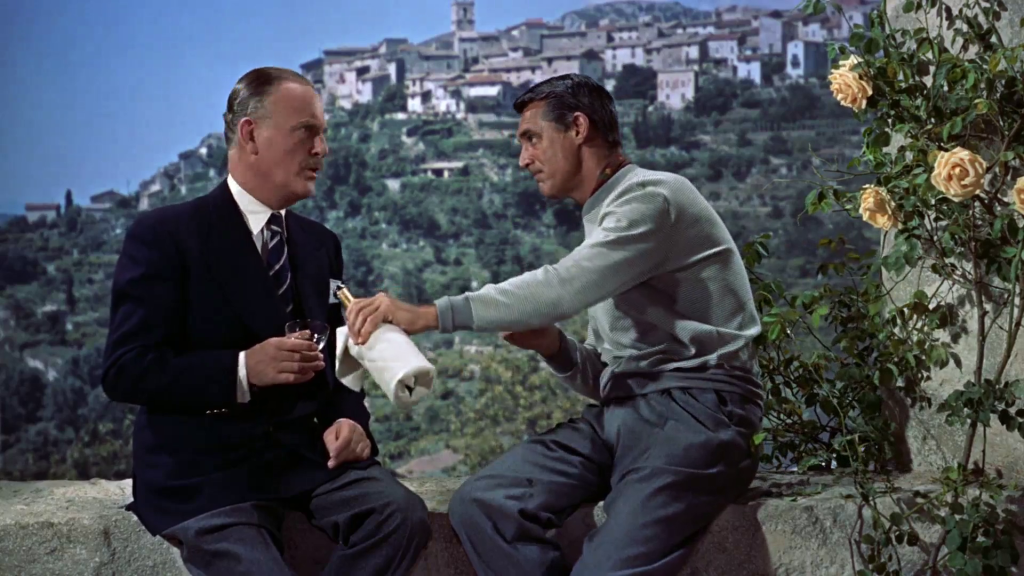
A little down the storyline, Grant repeats the casual look, but switches to a grey and white striped pullover and patterned scarf.
On this production, Hitchcock gave Grace more reign with the clothing than he usually gave his actresses. This allowed Edith Head more freedom to design the costumes, working them out first with Kelly and then bringing the ideas to Hitch. Grace Kelly was Hitchcock's ideal leading lady: "a paradox between the inner fire and the cool surface", as François Truffaut described her in his book Hitchcock/Truffaut. "She's sensitive, disciplined, and very sexy," Hitchcock describes his leading lady in an interview with Oriana Fallaci from 1963. "People think she's cold. Rubbish! She's volcano covered with snow."
Kelly's Frances Stevens has a reserved elegance, is ladylike and well mannered but argumentative and with a sharp sense of humour, too, unapproachable at first glance, but ready to make a move on Grant's John Robie when least expected and she is the one who is usually in charge of their cat-and-mouse game. And, last but not least, Grace had already proven her talent in two previous Hitchcock films, Dial M for Murder (1954) and Rear Window (1954).
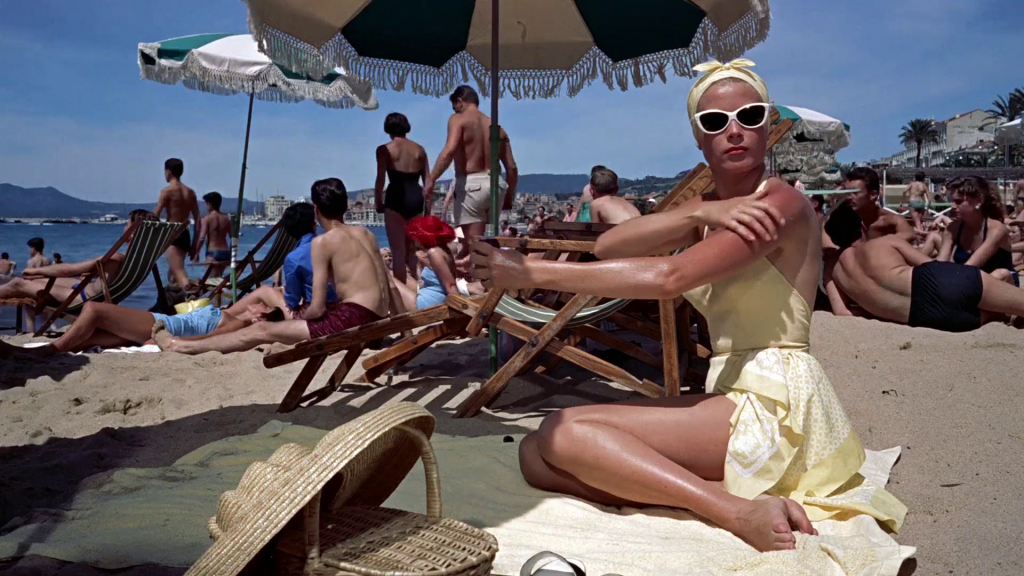
Grace's white rimmed cat-eye sunglasses are one of the best shades in the history of cinema.

The black cat: A little Hitchcock humour. Cary Grant's character is a retired jewellery thief, known as John Robie "The Cat".


Grace was also Cary Grant's ideal leading lady, and his sartorial equal. She floats throughout the movie in evening gowns and day-outfits that only enhance her lean figure, class and natural sense of elegance. And seeing them together, the chemistry between them is plain obvious. At her first encounter with Robie, Frances wears a flowing Grecian style gown of powder blue chiffon and no jewellery – the style and colour of the dress are suggestive enough for her character for that part of the movie. Hitchcock wanted Edith Head to use cool colours to play up the idea of Frances as an ice princess. "I deliberately photographed Grace Kelly ice-cold and I kept cutting to her profile, looking classical, beautiful, and very distant. And then, when Cary Grant accompanies her to the door of her hotel room, what does she do? She thrusts her lips right up to his mouth," Hitchcock told François Truffaut in their interviews.
As for Cary Grant, he is wearing his tuxedo like a second skin. Words are really useless to try to describe the forces behind his innate sense of dress and that almost unnatural effortlessness.


In his real life, Cary would usually wear a blazer even to a more casual outfit.
He made the ordinary gesture of putting his hands in his pockets seem incredibly elegant, nonchalant and confident.

Frances does enjoy attention and Hitchcock's take on the scene below is very suggestive in this regard: a swimwear ensemble formed of a black halterneck swimsuit and capri pants covered by a drawstring edged white skirt open at front, a wide brimmed hat (a Flying Nun hat) and a black turban, one of Grace's signature pieces, made legendary by the future princess. Although she is almost completely covered, she still turns heads and she definitely seduces Cary, too.


For the picnic scene that overlooks Monte Carlo, Grace wears a sleeveless coral pink top with a white pattern and matching pleated skirt, scarf and shoes, and white driving gloves. Dipping into the picnic basket, Frances asks: "Want a leg or a breast?", to which Robie, with one of his priceless looks, answers: "You make the choice." Grace specifically asked Edith to put her in a dress for this scene, because she was "making a play" for Robie. Grace and Cary felt so at ease with one another that they improvised scenes and Hitchcock went along with them.
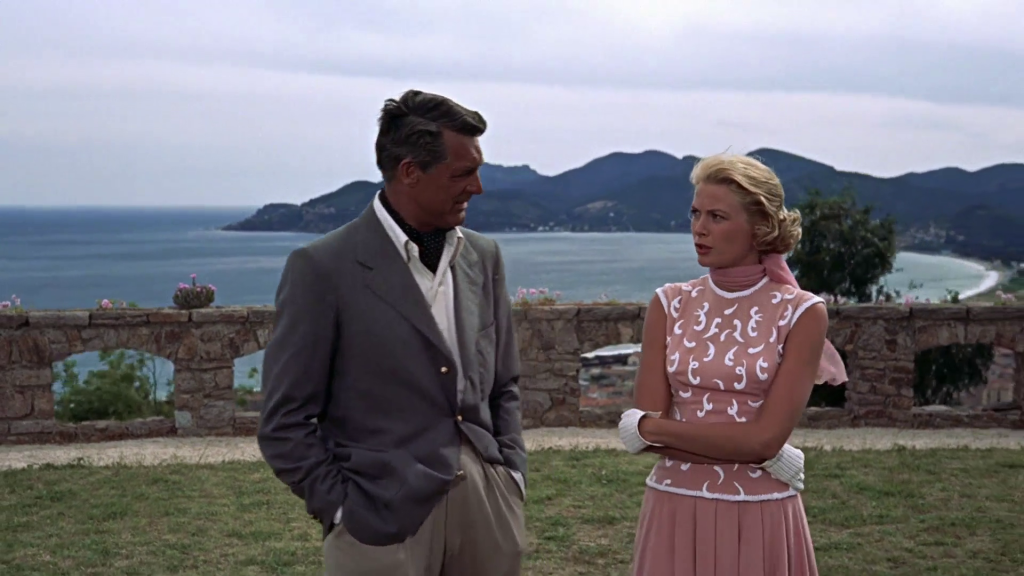

The fireworks scene is memorable, and so is the sparkle between Grace and Cary… It's when their game finally comes to an end. And it's again Frances who is more flirtatious. The sexual charge between the two can be cut with a knife and still makes the seen-it-all audiences of today wonder at how much and how better it can be said through innuendo, wit and style. "Sex on the screen should be suspenseful. If sex is too blatant or obvious, there's no suspense," Hitchcock told Truffaut.
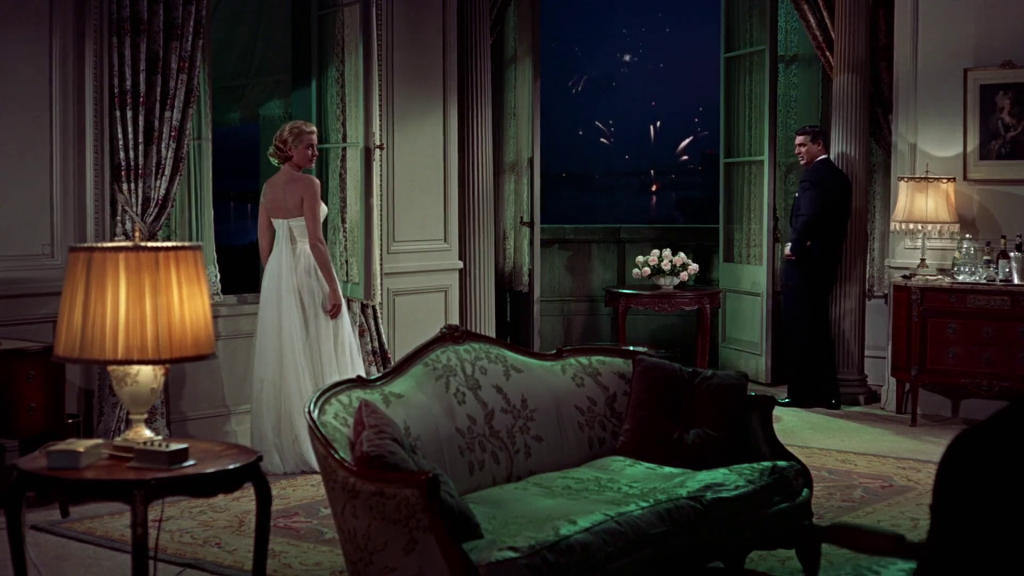

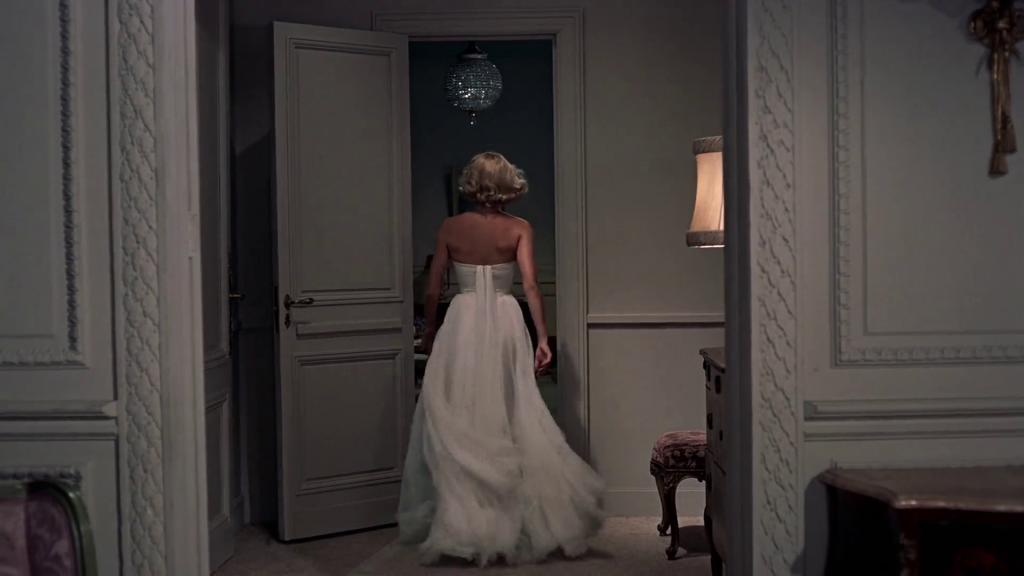
To her pearly white chiffon dress, Grace Kelly wears a superb diamond necklace,
shown off by the strapless gown, anticipating the following "burglar" scenes.

Cary Grant made the most formal look seem casual, relaxed and fun.
Clothes were a natural extension of himself.

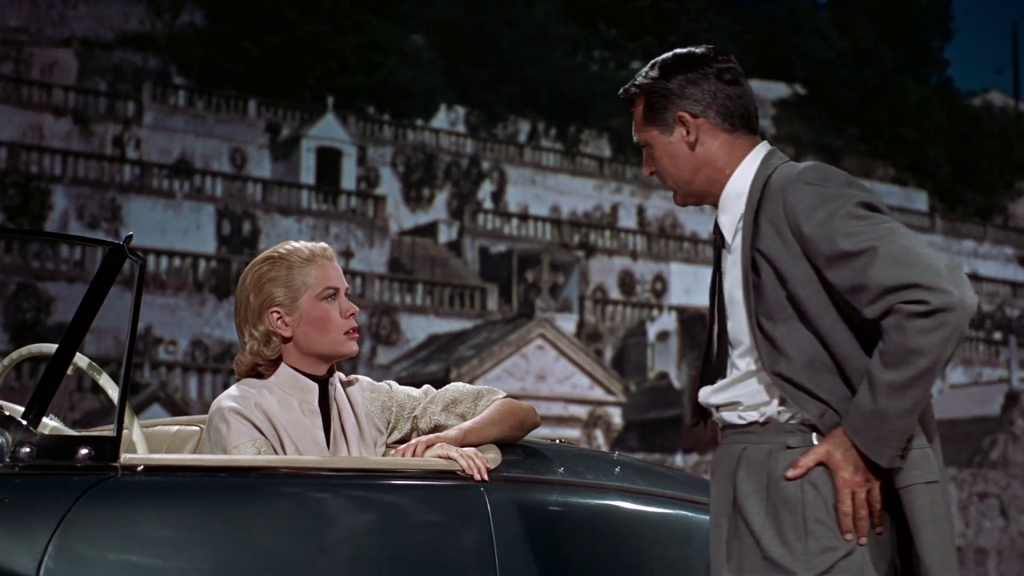
Near the end of the movie, a fancy masquerade ball is held at a mansion on the Cote d'Azur, and all of the extras wore costumes in the style of the court of Marie Antoinette. It was the most expensive costume scene Edith Head had ever done. Hitchcock instructed her to dress Grace as a "fairy princess" for the ball. Edith created a ball gown with a huge skirt of gold mesh adorned with fabric birds and accessorized with a golden mask, and topped Grace's head with a golden wig. Cary Grant in turn, is the personification of classic, timeless style. He plays an action scene on the rooftop as he is trying to clear his name and escape his shady past, and he is dressed accordingly: head-to-toe black, including a polo sweater. After the action is over, he tops the look off with an elegant black coat, just in time for the final scene, on the terrace of his home in the hills when he agrees to marry Frances: "Oh, mother will be so happy here," Frances says. Hitchcock doesn't miss the chance to put a grim note on the ending of his lighthearted film.
To Catch A Thief was a happy production. "I always went to work whistling", Cary recalled. And this showed on the screen.

images: movie stills from "To Catch A Thief", courtesy of Classiq Journal. Credit: Paramount Pictures
Editorial sources:Cary Grant: A Celebration of Style, by Richard Torregrossa. Alfred Hitchcock Interviews, edited by Sidney Gottlieb. Edith Head: The Fifty Year Career of Hollywood's Greatest Costume Designer, by Jay Jorgensen. Hitchcock/Truffaut, by François Truffaut. The Films in My Life, by François Truffaut
Source: http://classiq.me/style-in-film-to-catch-a-thief
0 Response to "Grace Kelly Blue Dress in to Catch a Thief"
Post a Comment